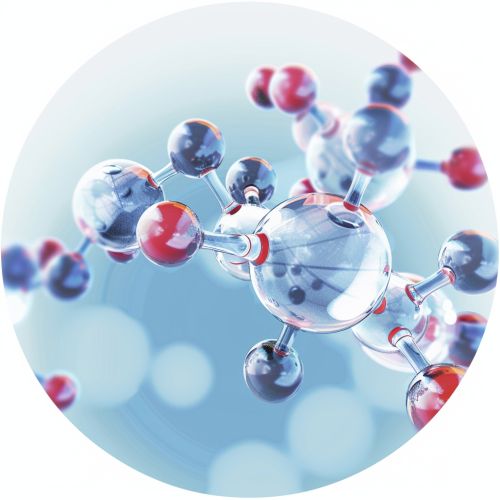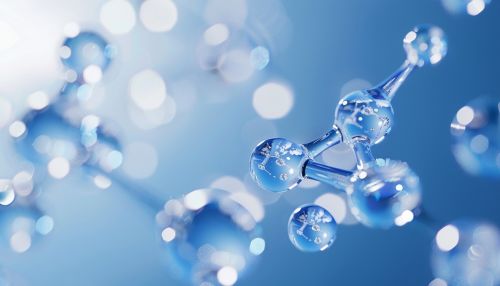Polar molecules
Polar Molecules
Polar molecules are a fundamental concept in chemistry, characterized by the presence of a permanent electric dipole moment. This occurs due to the unequal distribution of electrons between atoms in a molecule, leading to regions of partial positive and negative charge. Understanding polar molecules is crucial for comprehending various chemical behaviors, including solubility, reactivity, and intermolecular interactions.


Definition and Characteristics
A polar molecule is one in which there is a net separation of charge, resulting in a dipole moment. This dipole moment arises when atoms within the molecule have differing electronegativities, causing an unequal sharing of electrons. The atom with higher electronegativity attracts the shared electrons more strongly, gaining a partial negative charge, while the other atom acquires a partial positive charge.
For instance, in a water molecule (H₂O), the oxygen atom is more electronegative than the hydrogen atoms. Consequently, the oxygen atom holds a partial negative charge, while the hydrogen atoms hold partial positive charges. This distribution of charges creates a dipole moment, making water a polar molecule.
Dipole Moment
The dipole moment (μ) is a vector quantity that represents the magnitude and direction of the charge separation in a molecule. It is calculated as the product of the charge difference (δ) and the distance (d) between the charges:
\[ \mu = \delta \times d \]
The unit of dipole moment is the Debye (D), where 1 D = 3.33564 × 10⁻³⁰ C·m. The dipole moment is a critical factor in determining the physical properties of polar molecules, such as their boiling and melting points, solubility in various solvents, and interaction with electric fields.
Examples of Polar Molecules
Several common molecules exhibit polarity due to their molecular geometry and the electronegativity differences between their constituent atoms. Some notable examples include:
- **Water (H₂O)**: As mentioned earlier, water is a quintessential polar molecule due to the bent shape and significant electronegativity difference between hydrogen and oxygen.
- **Ammonia (NH₃)**: The nitrogen atom in ammonia is more electronegative than hydrogen, resulting in a trigonal pyramidal shape with a net dipole moment.
- **Hydrogen Chloride (HCl)**: The chlorine atom is significantly more electronegative than hydrogen, creating a linear molecule with a strong dipole moment.
Molecular Geometry and Polarity
The shape of a molecule, determined by its Valence Shell Electron Pair Repulsion (VSEPR) theory, plays a crucial role in its polarity. Even if a molecule contains polar bonds, its overall geometry can result in a nonpolar molecule if the dipole moments cancel each other out. For example, carbon dioxide (CO₂) has polar bonds, but its linear shape causes the dipole moments to cancel, making it nonpolar.
Conversely, molecules with asymmetrical shapes, such as water and ammonia, have dipole moments that do not cancel out, resulting in a net dipole moment and thus, polarity.
Intermolecular Forces
Polar molecules interact with each other through intermolecular forces, which are significantly influenced by their dipole moments. The primary types of intermolecular forces involving polar molecules include:
- **Dipole-Dipole Interactions**: These occur between the positive end of one polar molecule and the negative end of another. The strength of these interactions depends on the magnitude of the dipole moments.
- **Hydrogen Bonding**: A special case of dipole-dipole interaction, hydrogen bonding occurs when hydrogen is bonded to highly electronegative atoms like oxygen, nitrogen, or fluorine. This results in strong intermolecular attractions, significantly affecting the physical properties of substances.
- **Ion-Dipole Interactions**: These occur between an ion and a polar molecule, playing a crucial role in the solvation process, particularly in aqueous solutions.
Solubility and Polarity
The principle of "like dissolves like" is often used to predict the solubility of substances. Polar molecules tend to dissolve well in polar solvents due to the favorable interactions between the dipoles. For example, water, a polar solvent, readily dissolves other polar substances and ionic compounds. Conversely, nonpolar molecules are more soluble in nonpolar solvents, where dispersion forces dominate.
Applications and Implications
The polarity of molecules has far-reaching implications in various fields, including chemistry, biology, and materials science. Some key applications include:
- **Solvent Selection**: In chemical synthesis and extraction processes, the polarity of solvents is crucial for selecting appropriate solvents to dissolve reactants or products.
- **Biological Systems**: Many biological molecules, such as proteins and nucleic acids, have polar regions that influence their structure, function, and interactions. For example, the hydrophilic and hydrophobic regions of proteins determine their folding and function.
- **Material Science**: The design and development of new materials, such as polymers and nanomaterials, often rely on the manipulation of molecular polarity to achieve desired properties.
Conclusion
Polar molecules are a cornerstone of understanding chemical behavior and interactions. Their unique properties, arising from the unequal distribution of electrons and resulting dipole moments, influence a wide range of phenomena from solubility to biological function. By exploring the intricacies of polar molecules, one gains deeper insights into the molecular world and its applications across various scientific disciplines.
